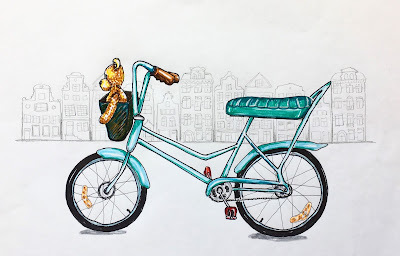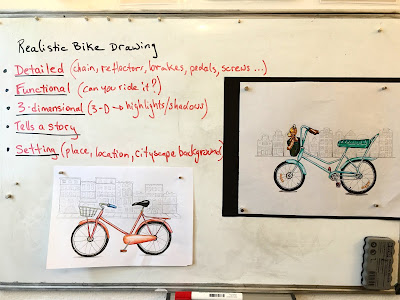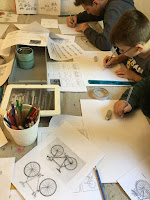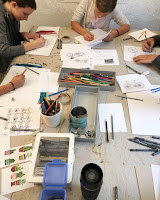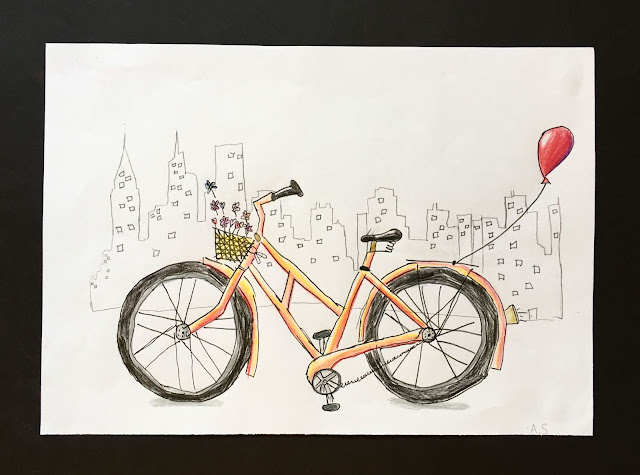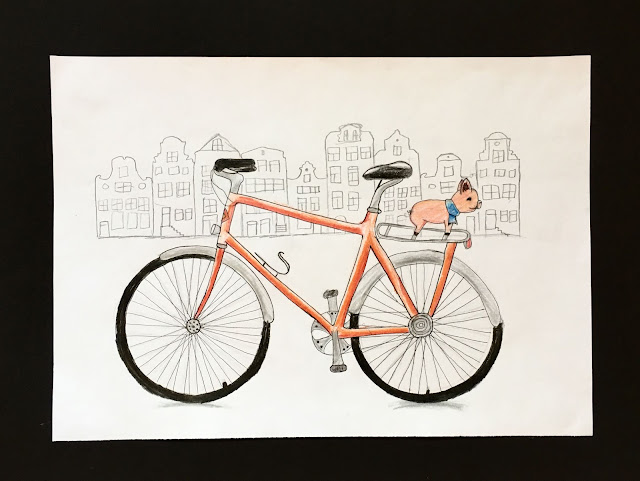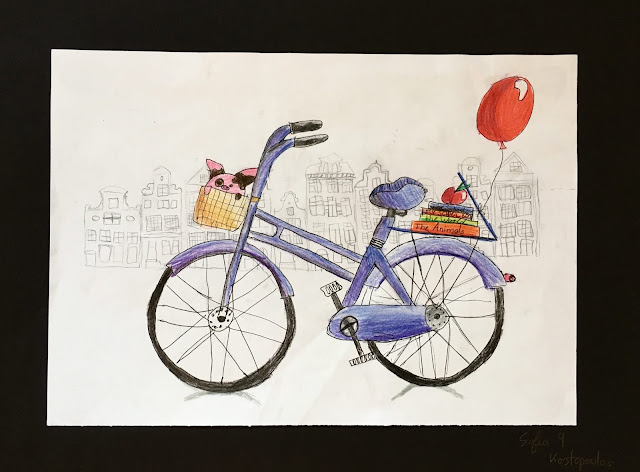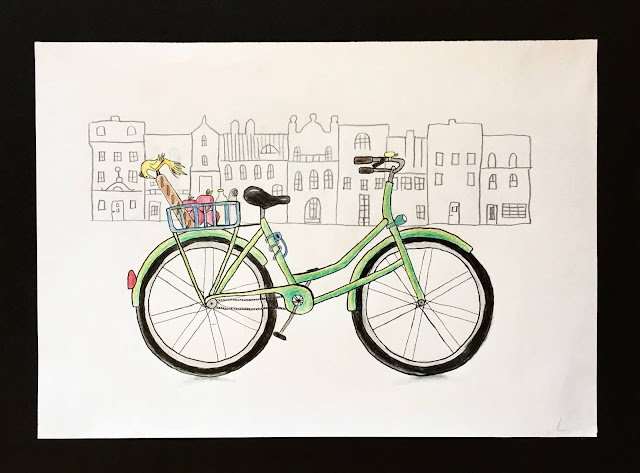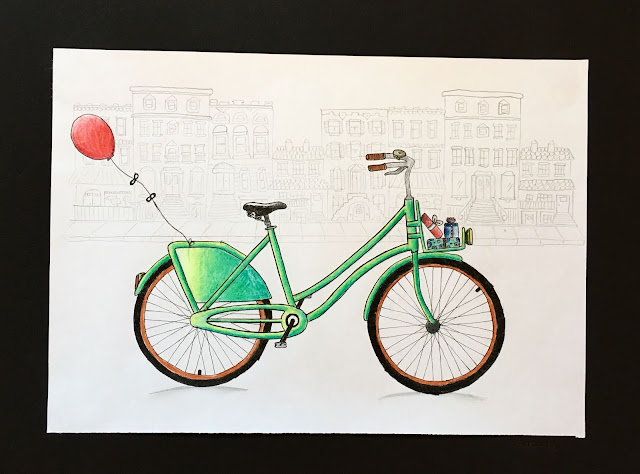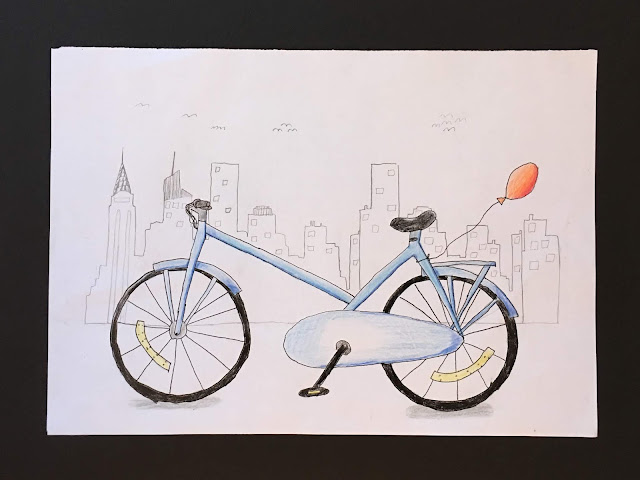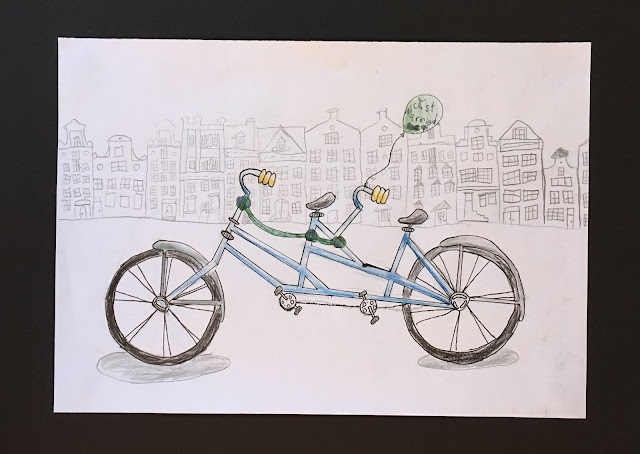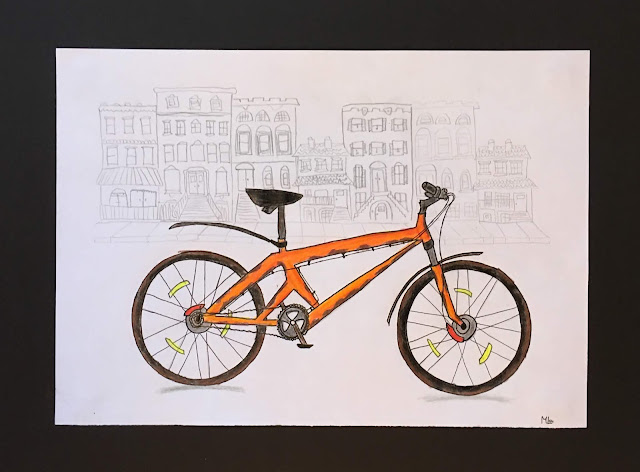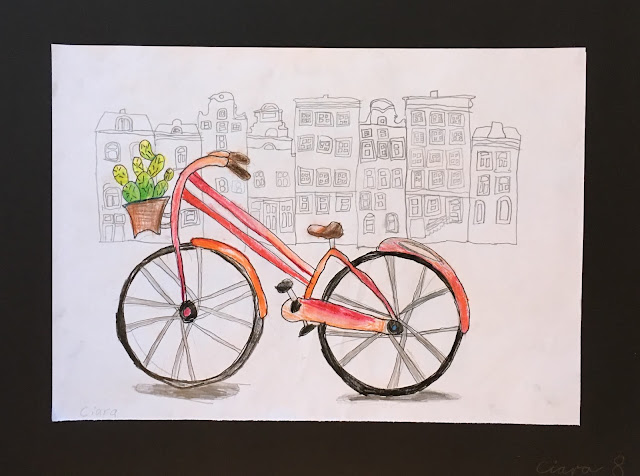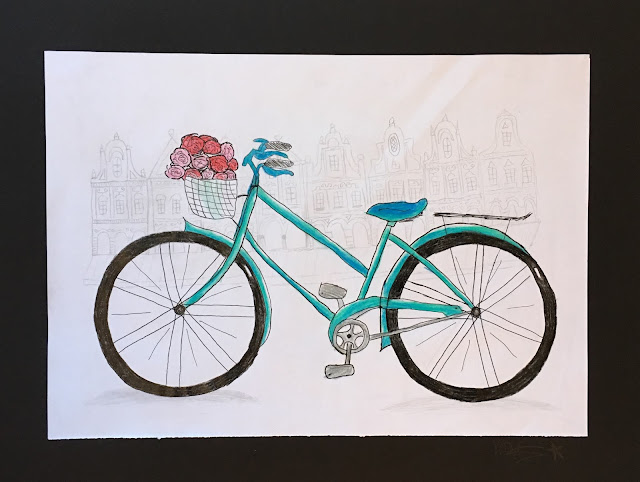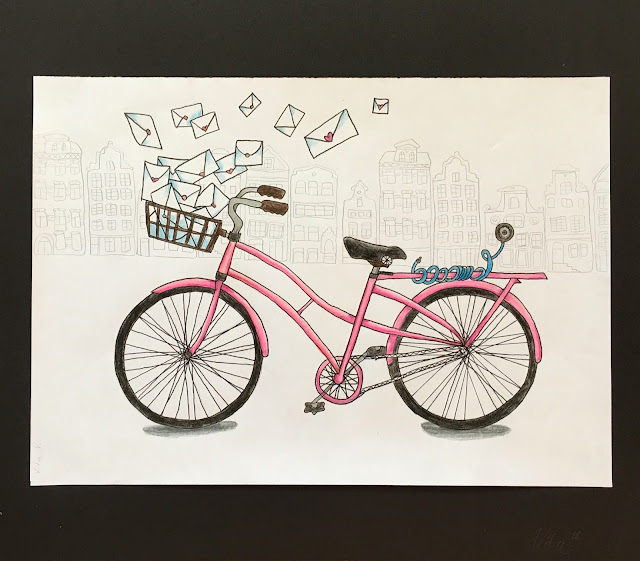 |
| Ages 8-10 |
 |
| Ages 8-14 |
--Drawing the cactus composition
Objectives and process - Day 2
--Painting the composition
Students used the wet-on-wet watercolor technique to paint their cactuses. Color had to be light, transparent and ethereal - this means wetting the surface of the space to be painted first, then dropping in some color and allowing it to spread. Students were encouraged not to overwork their paint, but rather, just let it do it's wet-on-wet thing. Students had to consider where their light source is, and paint their cactuses accordingly. If the light comes from the left side of their paper, then the left side of all their objects, including cactuses, cactus arms, flowers, terra-cotta pot, should be lighter than the opposite side. To achieve this, students dabbed less color into the highlight side of their cactuses, and added extra color into the shade side of their objects to get a darker value. Again, they were encouraged not to overwork or scrub their paint around, but just let the watery color bleed and blend. We looked at lots of watercolor cactuses I printed from the web, so they could see the wet-on-wet effect and the soft changes in value that comes from allowing colors to bleed and spread when dropped into wet areas.
*Painting tip:
To prevent the color from one cactus from bleeding into the next cactus, we skipped over a cactus when painting, so there is always 'dry' space between our wet spaces. Watercolor will only go where the paper is wet, so this technique of 'paint-skip-paint' helps us control unwanted bleeding across different spaces. With watercolor, controlling the water was key! Students should not wet their areas too much, or their color will pool and puddle. If and when this happens, we can dab up a bit of water up with a tissue. This also gives us a neat texture and creates more transparency.
*Note on using tissue:
I allow for using tissue when we want to achieve specific texture, to achieve determined areas of highlight, or when water puddles out of control. However, students WILL abuse the tissue, dabbing away here, there and everywhere instead of controlling the water with their brush, which is how they SHOULD be working, so I keep an eye on them and will sometimes confiscate the tissue if I see a student is relying too heavily on it. The issue here is, that they are not learning how to appropriately control their water with their brush, and are using the tissue to clean up their all-too-wet, all-too-uncontrolled mess. Additionally, and importantly, dabbing everywhere with tissue creates a very flat image which lacks any and all value, intensity and texture. Not good art, and not a good learning experience.
Color:
Students were asked to use many cool colors together, and to mix their own colors. Straight out of the paint pan colors were discouraged. Students had a scratch watercolor paper to explore their color mixing before painting on their final piece, and they were thrilled with the beautiful colors they were discovering. Blue-greens, green-yellows, green-browns, blue-browns, blue-yellows, blue-purples....so many beautiful combinations.
For variety, emphasis and interest, each cactus variety had to be a different color.
Brushes:
As always, students had access to various brush sizes when painting - larger for larger areas, and small, fine brushes for the smaller areas.
Terra-cotta pot:
The pots were colored in the same way as the cactuses, using browns, ochres, yellows and oranges. We used a wet-on-wet technique, considered light source, and created that extra light side and that added darker value on the shade side.
Background:
Tabletops were done in a light wash of a neutral color - many chose grey (black with plenty of water), and the walls were done in a color that off-set the cool colors of our cactuses (many chose pink). All were done in light washes of wet-on-wet color.
This project took two 90-minute classes. My students love drawing with pen and pencil, so this was really fun for them. Watching their compositions come to life, and look 3-D, with the addition of color and value, was exciting for them too. Thinking about composition, variety and detail was an exciting challenge and a useful skill. All went home feeling accomplished and proud.

























